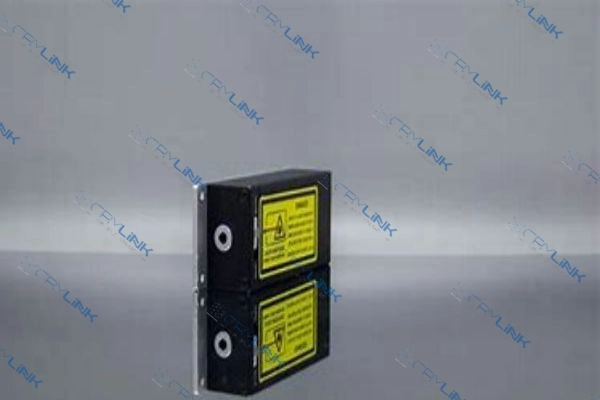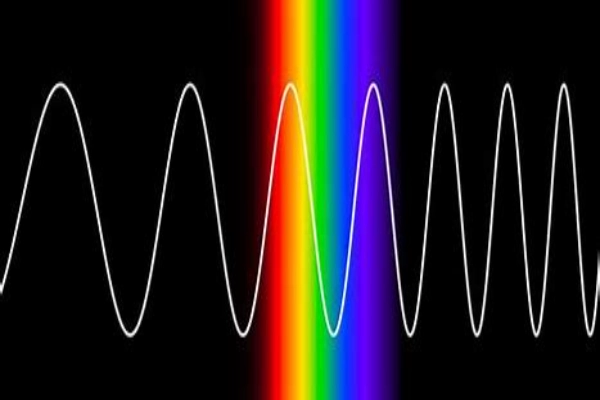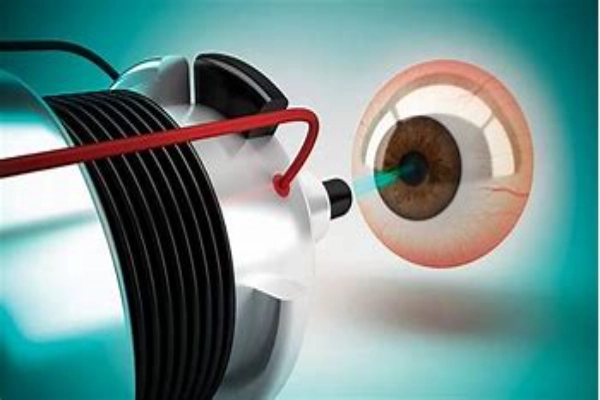Introduction to UV Spectroscopy
UV Spectroscopy, standing for ultraviolet-visible spectroscopy, is a powerful analytical technique used to analyze the absorption, emission, or reflectance of ultraviolet and visible light by molecules. This analytical tool provides a detailed insight into the molecular structure and dynamics of various compounds. With the advent of technology, especially the introduction of 266nm lasers, the precision and accuracy of UV spectroscopy have significantly improved.

The Power of 266nm Lasers in UV Spectroscopy
The power and potential of 266nm lasers in UV spectroscopy are unparalleled. Since their integration into the world of molecular analysis, these lasers have consistently proven to be game-changers, redefining the way we view and understand the microscopic universe of molecules.
When we trace back to the origins of lasers in spectroscopy, it’s evident that the journey has been nothing short of revolutionary. Lasers, with their coherent and intense beams of light, offered a unique tool for scientists to probe the nature of matter. Different wavelengths were employed in spectroscopy, each bringing its own set of advantages and challenges. Amid this exploration, the 266nm laser emerged as a beacon of precision and reliability. Its wavelength, lying in the ultraviolet region, possesses the unique capability to excite molecules in a way that other lasers couldn’t achieve. This specific wavelength opened new doors for researchers, granting them access to previously uncharted molecular territories.
Diving deeper into the merits of the 266nm laser, one cannot help but marvel at its array of benefits. The first and foremost is the energy it packs. Remember, in the realm of photons, shorter wavelengths translate to higher energy. The high energy of the 266nm laser photons makes them particularly adept at exciting molecules. When these molecules relax back to their ground state, they emit radiation which is captured and analyzed in UV spectroscopy. The data thus obtained is richer, more detailed, and offers unparalleled insights into molecular structures and their dynamics.
Another standout feature of the 266nm laser is its narrow bandwidth. In spectroscopy, the resolution is key. You want to differentiate between closely lying energy levels of molecules, and for that, you need a laser source that provides a sharp, well-defined beam. The 266nm laser’s narrow bandwidth ensures that the light’s intensity is concentrated around a specific wavelength, leading to high-resolution spectra. This is akin to having a microscope with an incredibly sharp focus, revealing minute details that would otherwise be blurred or missed.
Furthermore, the very nature of UV light ensures minimal scattering. In simpler terms, when the 266nm laser light interacts with a sample, most of it is absorbed, and very little is deflected or scattered. This characteristic is crucial as it ensures that the majority of the light contributes to meaningful data, enhancing the signal-to-noise ratio. A higher signal-to-noise ratio means that even weak signals, which might represent trace compounds or low concentrations, can be detected against the background noise.
Lastly, when we talk about precision and accuracy, the 266nm lasers are in a league of their own. The spectra obtained using these lasers are razor-sharp, with peaks that stand out distinctly, allowing for easy and accurate interpretations. Such precision ensures that even molecules with very similar structures, like isomers, can be differentiated. For researchers, this means a more comprehensive understanding of samples, enabling them to make more informed decisions in their respective fields, be it drug design, environmental monitoring, or any other application of UV spectroscopy.
In essence, the incorporation of 266nm lasers into UV spectroscopy has been transformative. By offering higher energy, superior resolution, minimal scattering, and unmatched precision, these lasers have redefined the boundaries of molecular analysis, setting new benchmarks for what’s achievable in the realm of spectroscopy.

Applications of UV Spectroscopy
The versatility of UV Spectroscopy, especially when combined with the precision of 266nm lasers, has made it an indispensable tool in a variety of domains. Its ability to delve deep into the molecular realm and provide insights that were once deemed impossible has revolutionized several sectors.
Delving into the domain of atmospheric studies, it’s evident that the very air we breathe is a complex mixture of countless compounds. While many of these are harmless, some can pose significant threats to both our health and the environment. With urbanization and industrialization scaling new heights, the release of harmful pollutants into the atmosphere has become a pressing concern. Here’s where UV Spectroscopy steps in as a guardian of the skies.
The technique, with its heightened precision, can detect even trace amounts of pollutants, from greenhouse gases to volatile organic compounds. By quantifying these pollutants, researchers can gauge the health of our atmosphere, making predictions about climatic changes and devising strategies to combat air pollution. Furthermore, by understanding the interactions between different atmospheric compounds, scientists can predict phenomena like acid rain, smog formation, and even the depletion of the ozone layer.
Transitioning from the skies to the earth, UV Spectroscopy’s prowess is equally evident in environmental monitoring. The planet’s ecosystems, be it aquatic or terrestrial, are under constant threat from human activities. Contaminants, ranging from industrial effluents to agricultural runoffs, can disrupt the balance of these ecosystems, leading to catastrophic events like algal blooms, loss of biodiversity, and even ecosystem collapse. Analyzing these environmental samples is, however, no easy feat, given their complexity.
UV Spectroscopy emerges as a beacon of hope in this scenario. With its ability to identify and quantify pollutants and toxins, it offers a comprehensive view of the health of ecosystems. By flagging potential threats, it allows for timely interventions, ensuring that our water bodies remain pristine and soils fertile. Moreover, the data obtained aids policymakers in framing regulations, ensuring sustainable development without compromising environmental integrity.

In the realm of biomedical research, UV Spectroscopy is nothing short of a miracle worker. The world of medicine is one of intricate details, where understanding the minute interactions between molecules can be the difference between life and death. Whether it’s the design of a new drug or the understanding of a protein’s function, a deep dive into the molecular world is imperative. UV Spectroscopy, with its molecular magnifying glass, offers researchers a detailed view.
The technique’s ability to analyze molecular structures, interactions, and even dynamics is unparalleled. For instance, when developing a new drug, understanding its interaction with biological molecules is crucial. UV Spectroscopy can shed light on these interactions, predicting the drug’s efficacy and potential side effects. Similarly, in the domain of genetics, understanding the structure and function of DNA is of paramount importance. UV Spectroscopy, with the precision of 266nm lasers, can elucidate even the most intricate details of DNA, propelling research forward.
In essence, UV Spectroscopy, supercharged by 266nm lasers, is a tool of immeasurable value, finding applications from the vast expanse of the atmosphere to the intricate world of cells. Its contributions to science and society are monumental, and as technology progresses, its impact is only set to grow.

The Future of UV Spectroscopy with 266nm Lasers
The fusion of 266nm lasers with UV Spectroscopy has ushered in an era of unprecedented accuracy and depth in molecular analysis. This amalgamation has already redefined the benchmarks in the field, but given the rapid pace of technological advancements, the horizon promises even more groundbreaking developments.
As we peer into the future, the evolution of 266nm lasers themselves is inevitable. Researchers are constantly striving to enhance the stability, coherence, and power of these lasers. Improved laser designs, coupled with advancements in materials and optics, will result in lasers that offer even narrower bandwidths and greater intensities. This, in turn, would lead to spectra with even higher resolutions, allowing scientists to discern molecular details at an atomic or even subatomic level.
Furthermore, the marriage of UV Spectroscopy with computational methods and artificial intelligence will pave the way for real-time analysis and predictions. Imagine a world where, with a single scan, UV Spectroscopy can not only provide detailed molecular data but also predict molecular behavior and interactions, all in a matter of seconds.
In practical applications, portability and accessibility will be key focus areas. We can anticipate the development of compact, user-friendly UV Spectroscopy devices powered by 266nm lasers. These would cater not just to high-end research labs but also to industries, healthcare centers, and even educational institutions, democratizing the power of advanced molecular analysis.
Indeed, the fusion of 266nm lasers and UV Spectroscopy stands as a testament to human ingenuity, and as we move forward, the possibilities are limitless. The canvas of the future is vast, and UV Spectroscopy, with its precise laser brush, is poised to paint a masterpiece.

Conclusion
UV Spectroscopy, especially with the integration of 266nm lasers, is an indispensable tool in the field of molecular analysis. Its precision and accuracy have led to breakthroughs in atmospheric studies, environmental monitoring, and biomedical research. As we continue to harness the power of this technology, the future of molecular analysis looks promising and precise.
FAQs
- What is the significance of the 266nm wavelength in lasers for UV Spectroscopy?
- The 266nm wavelength ensures higher energy photons for better molecular excitation and offers a narrow bandwidth for high-resolution spectra.
- How does UV Spectroscopy aid in environmental monitoring?
- UV Spectroscopy helps in identifying and quantifying pollutants, toxins, and other compounds in environmental samples, ensuring the health of ecosystems.
- Why is UV Spectroscopy crucial in biomedical research?
- UV Spectroscopy plays a role in drug development, protein analysis, and understanding DNA structures, ensuring effective and safe medical solutions.
- Are there any limitations to using 266nm lasers in UV Spectroscopy?
- While 266nm lasers offer precision, they might not be suitable for all compounds. The choice of laser depends on the molecular structure and properties of the compound being analyzed.
- How has the introduction of 266nm lasers impacted the field of UV Spectroscopy?
- The introduction of 266nm lasers has enhanced the precision and accuracy of UV spectroscopy, leading to detailed molecular analysis across various fields.

Frank
Frank graduated from the University of Shanghai for Science and Technology, majoring in optics. As a technical engineer at Crylink Company, he deeply understands crystal materials and laser components.
Related Video(s) with this Article
Related Product(s) with this Article
Related Application(s) with this Article
